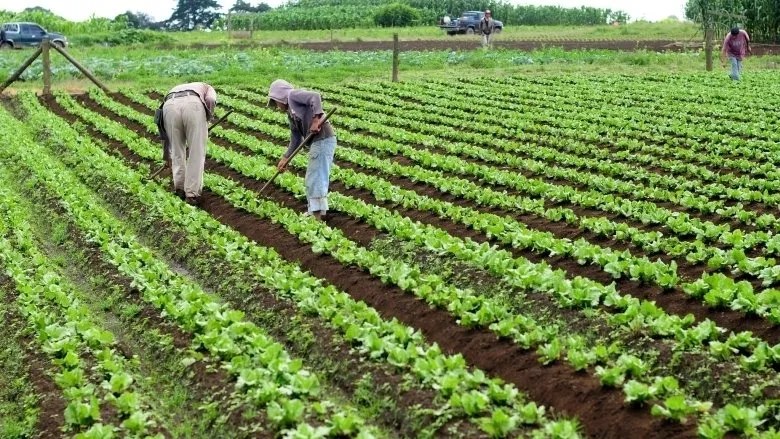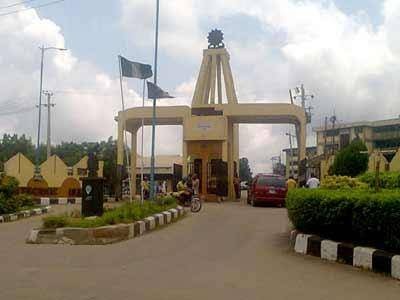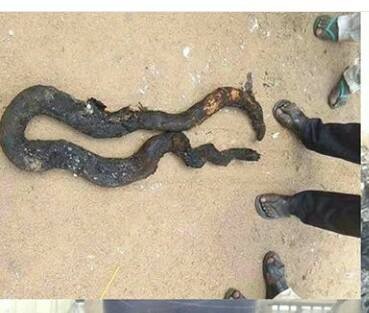
Agric lesson note for JSS1 Third Term is now available for free. The State and Federal Ministry of Education has recommended unified lesson notes for all secondary schools in Nigeria, in other words, all private secondary schools in Nigeria must operate with the same lesson notes based on the scheme of work for Agric.
Agric lesson note for JSS1 Third Term has been provided in detail here on schoolgist.ng
For prospective school owners, teachers, and assistant teachers, Agric lesson note is defined as a guideline that defines the contents and structure of Agric as a subject offered at SS level. The lesson note for Agric for SS stage maps out in clear terms, how the topics and subtopics for a particular subject, group works and practical, discussions and assessment strategies, tests, and homework ought to be structured in order to fit in perfectly, the approved academic activities for the session.
To further emphasize the importance of this document, the curriculum for Agric spells out the complete guide on all academic subjects in theory and practical. It is used to ensure that the learning purposes, aims, and objectives of the subject meant for that class are successfully achieved.
Agric Lesson note for JSS1 carries the same aims and objectives but might be portrayed differently based on how it is written or based on how you structure your lesson note. Check how to write lesson notes as this would help make yours unique.
The JSS1 Agric lesson note provided here is in line with the current scheme of work hence, would go a long way in not just helping the teachers in carefully breaking down the subject, topics, and subtopics but also, devising more practical ways of achieving the aim and objective of the subject.
The sudden increase in the search for JSS1 Agric lesson note for Third Term is expected because every term, tutors are in need of a robust lesson note that carries all topics in the curriculum as this would go a long way in preparing students for the West African Secondary Examination.
This post is quite a lengthy one as it provides in full detail, the Agric approved lesson note for all topics and sub-topics in Agric as a subject offered in JSS1.
Please note that Agric lesson note for JSS1 provided here for Third Term is approved by the Ministry of Education based on the scheme of work.
I made it free for tutors, parents, guardians, and students who want to read ahead of what is being taught in class.
JSS1 Agric Lesson Note (Third Term) 2024
Agricultural Science JSS1 Third Term
WEEK 1 Revision and General cleaning of the environment
Weed and pest control
WEEK 2 Factors of productions
Land, characteristics, Rewards, methods of improvement
WEEK 3 Factors of production
Labour, types of labour, Reward of labour
WEEK 4 Factors of production Capital
-Types of Capital
-Importance of Capital
- Sources of capital
WEEK 5 Factors of production
Farm Manager
-Function of farm manager
-Problems of farm manager
WEEK 6 Mid-Term Test
WEEK 7 Field Trip Excursion to an Established Farm
-Field
WEEK 8 Problems and functions of farm Manager
-Inadequate Farm
-Government policies
-Information about sources of input
WEEK 9 Problems and functions of farm Manager Contd
WEEK 10 Revision
WEEK 11 Revision and Examination
WEEK 12 Examination
Week 1
Topic: Pests of Crop Plants and Control
Effect of Economic importance of insect pests in crop production
- They destroy crop by biting, chewing, piercing and defoliation activities
- Reduction in farmer’s profit.
- Some insects are disease carriers.
- Increased rate of crop production
- Reduction in the viability of stored produce
- They can cause total death of crops
- Spot of injuries by insect may predispose crop to disease attack
- They render farm products unattractive and unmarketable
Prevention and Control of Pests
Pest control can be done via 3 methods – physical, chemical and cultural.
Physical Control – This involves the removal of insect by
- hand picking of insects and larvae
- setting traps to catch rodents
- shooting rodents with gun
- fencing round the farm with wire nets
Cultural Control – This method involves the use of farm practices to prevent or control pests especially on the field. Examples of cultural control include
1.Bush fallowing
2.Crop rotation change in the time of planting
3.Regular weeding
4.Proper timing of planting
5.Use of pest resistant varieties
6.Burning of crop residues
7.Proper time of harvesting
8.Appropriate tillage operations
9.Close season practices
Biological Control – This involves the introduction of the natural enemies of pests to control or keep the pests population under control. Such enemies eat up or feed on these pests thereby reducing the population of the pests.
Chemical Control –
Chemical control involves the use of chemicals called pesticides to control pests of crop plants. These chemicals which are in form of powder, liquid, granules and tablets are used on the insects by various methods like spraying or dustings seeds or plants to check pests. Examples of such chemicals include:
- Pesticides – chemicals to control pests
- Insecticides – chemicals to control insects
- Rodenticides – chemicals to control rodents
- Avicides – chemicals to control birds
- Nematicides – chemicals to control nematodes
The micronutrients are boron, chlorine, cooper, iron, manganese, molybdenum, and zinc. These plant food elements are used in very small amounts, but they are just as important to plant development and profitable crop production as the major nutrients. Especially, they work “behind the scene” as activators of many plant functions.
Insecticide
An insecticide is a chemical prepared used for the control of pest.
Types of insecticides
There are 4 major forms of insecticides used in the control of pest.
- Powder – mode of action is by contact
- Liquid – mode of action is systemic
- Granules – mode of action is through stomach
- Gaseous – mode of action is by fumigation
Crops and Major pests
Crop Pests
Beans Beans weevils (Callosobronchus maculatus)
Rice Rice weevil (Sitophilus oryzae), stem borers, army worms and leaf rollers
Maize Maize weevils (sitophilus zea), stem borers and army worms
Yam Yam beetles and rodents
Cocoa Stem borers, root mealy bug, aphids, black tea thrips, and scales
Groundnut Leaf worm aphids, boll worms, snail and hoppers
Cotton Cotton strainers and boll worms
Sorghum Weevils, boll worms, aphids and sorghum midge
Stored grains Weevils
Effects or Economic Importance of Insect Pests in Crop Production
1.Insect pests destroy crops in the field through their biting, chewing, boring, sucking and defoliation activities
2.They cause reduction in the viability of stored produce
3.Site of injuries by insects may predispose crops to disease attack
4.They increase the cost of production during the course of controlling them
5.They render vegetables and fruits unattractive and unmarketable
6.Some are carriers or vectors of diseases
7.The profits of farmers are reduced
8.They reduce the quality of produce either in the store or in the field
9.They generally reduce the yield of crops
10.They can also cause total death of crop plants
Side effects of Various preventive measures
Cultural Method of Control
- Use of fire to kill harmful pest may result in destruction of other useful organisms
- Resistant varieties may adapt to the environment causing resistance to be short-lived
- Fire may spread to other farms if not properly managed
- Use of fire may cause loss of organic matter of soil and destruction of soil structure
Chemical Method of Control
- Some beneficial insects and soil organisms maybe destroyed
- Pests and diseases may develop resistance
- Chemicals used may be toxic to man and crops
- It may leave undesirable residual in the environment
- Some chemicals washed out through water, soil erosion may cause pollution to larger rivers
Biological Method of Control
- New organism introduced may start attacking crops
- Predators expected to control other may rather feed on other beneficial insects
- Introduction of new organisms may cause imbalance in the ecosystem
Practice Questions
Use the options listed to answer the questions 1 – 3 below
Insecticide, Nematicide, Avicides, Pesticides, Rodenticides
1.____ chemical is used to control pests
2.____ chemical is used to control birds
3._____ chemical is used to control nematode
4.List three economic importance of pests
5.What are the side effects of chemical method?
Week 2
Topic: Factors of Production
Meaning of Production
Production can be defined as the transformation of raw materials into finished goods. It is concerned with all legal activities which are directed towards the satisfaction of human wants.
Human wants are many, but they can be divided into material wants and non-material wants. The material wants are referred to as goods while the non-material wants are called services.
Production involves the conversion of raw materials and semi-finished goods into tangible goods that can satisfy the needs of the people. Examples of tangible goods are: yam, rice, clothes, cars, radio etc.
Factors of Production can be defined as the basic resources or agents used for producing goods and services. Factors of production make it possible for goods to be produced in the required quantity and quality.
The factors of production are land, labor, capital and entrepreneur.
LAND: The land is a free gift of nature; it refers to the resources provided by nature to aid the production of goods and services. Examples of land are rivers, farmlands, seas, the fishes in them, forestry minerals such as coal, crude oil, iron etc. Others are the climatic conditions like rain, sunshine, animals etc.
Features of Land
The following points below are the features/ characteristics of land
- Land is geographically immobile i.e the location of land cannot be changed, it is fixed.
- Land can appreciate or depreciate in value. The value of land varies from one location to another.
- It is a free gift of nature
- It is abundant in some areas and scarce in some areas
- It is heterogeneous in quality, differing from one place to another in topography, soil texture and structure, soil fertility
- The supply of land is limited and is also subject to diminishing returns
- Availability of land is subject to Land Use Act/Law
- Its suitability influences output
- It can be used as a collateral for loan
- The reward for labor is RENT
Uses of Land
1.Production of Food crops – Land is used for the production of food crops such as Yam, Rice, Beans, Cocoa yam, as well as production of cash crops such as Cocoa, Cotton, Rubber, Groundnut etc
2.Livestock Production – Land is also used for natural grazing of livestock like cattle, sheep, and goats.
3.Forestry – Land is used for forestry which involves the management of the forest and its resources for man’s use.
4.Wild Life Conservation
5.Fishery – For production of fish
Non-Agricultural Uses of Lands
1.Residential purpose – Construction of houses and buildings
2.Transportation – Construction of Roads, Bridges, Rail ways etc
3.Mining – Coal, petroleum and other mineral resources are found on land
Assessment
1.Mention 4 unique characteristics of land
2.List 3 Agricultural uses of land
Week 3
TOPIC: Factors of Production – Labour
LABOUR: Labour is the mental or physical efforts of man which is directed towards the production of goods and services. Examples of labor are the work of farmers, carpenters, teachers, policemen etc.
Features of Labour
- Labour is mobile i.e., can move from one location to another
- Labour controls other factors of production
- Labour has feelings
- Labour requires motivation
- Labour is not fixed
- Labour is a human factor
- The reward for Labour is WAGE
The important peculiarities of labour are:
1.Labour is inseparable from the labourer: Here labour means a quantum of work performed while labourer means who perform the work (e.g. labour). Therefore, the labour’s work has to be delivered in person.
2.Labourer sells his services not himself: If labourer is employed means an employer only pays in the form of wages on account of services received from the labourer. Thus, labourer is only selling his services not himself.
3.Labour is more perishable than other commodity: If time passes, it lapses forever. Therefore, a day lost which out work means the day’s work gone forever. That is why many times workers have to accept lower wages rather than earn nothing.
4.Labourer has not the same power of bargaining as their employers. This is because labour cannot be stored up and labourers are poor and ignorant.
5.Man, not a machine: A labourer differs from machine. He cannot render services like machine. After all labourer is man and he has feelings and likings. If good surrounding, health, recreation is provided, he can work efficiently otherwise he will not work efficiently.
6.Less mobile: Generally, labourer does not want to leave his home. It is therefore labour is such less mobile as compared to other factors.
7.Supply Independent of its demand: The supply of labour is always independent of its demand and cannot be easily and quickly increased or decreased. If supply of labour is surplus, their numbers can be reduced only by a painful process of starvation. But when sudden increase demand for labour, as during war, wages will rise but supply can not be quickly increased.
8.Labourer differs in efficiency: Like machinery every worker cannot render same quantum of work labourer they very inefficiency and therefore wages differ from labourer to labourer.
Assessment
Mention 4 characteristics of Labour
Week 4
Topic: Factors of Production – Capital
CAPITAL: Capital is defined as the man-made assets used in production. It is the man-made wealth used in the production of other goods. The reward for capital is “INTEREST”.
Capital as factor of production includes all material resources (excluding land) or stock of wealth used productively. The meaning of Capital in economics is more precise and restricted than its meaning to a businessman or an accountant. A stock of money, shares in a company or a private hoard of consumer goods is not capital.
Capital is used in all production except the most primitive form. A spade is capital to a market gardener. Machinery, factories, railways, roads, producers’ stock of material, equipment and partly finished or finished goods are all capital.
Features of Capital
- Capital is man made
- Capital is durable
- Capital exist in different forms
- It promotes division of labour
- Capital exist in different forms
- Can be created by an excess of production over consumption.
- Must be maintained because it deteriorates with age and use.
- A proportion of the value of land is capital factor of production due to additions of fertilizers, fencing, drainage.
- Yields an income in the form of improved production.
- Is mobile in the long run, but specific moderately.
- Must be represented by savings.
- Ownership can be separated from control of its uses.
- Round-about process of production makes stocks in warehouses and shops capital.
Physical or Tangible Capital:
The material things which are used as inputs in the production of future goods are called tangible capital. The major categories of tangible capital office buildings, power plants, factories, ware-houses, machines, inventories of inputs, roads, highways, etc.
Intangible Capital:
Intangible capital consists of non-material things that contribute to the output of future goods and services. For example, investment by a firm in advertising to establish a brand name, or establishing a training programme for employees to increase their still (human capital) is an input and so included in capital.
Functions of Capital:
Capital occupies an important position in determining the rate of economic development in the country. The main functions of capital, in brief, are as under:
(i) Capital provides equipment which help in the process of economic development.
(ii) An increase in the stock of capital goods like machinery factories, equipment, buildings, economic overhead capital (transport, railroad, communication, etc) and equipment for education, health, shelter etc., enhances the growth of output per capita and consequently the income per capital raised.
(iii) The accumulation of capital makes the labor better equipped and delays the operation of law of diminishing returns in agriculture and industry to a great extent.
(iv) Capital determines the quantity and also the composition of output in the economy.
(v) Capital puts the economy on the path to development. It results, in technological discoveries.
(vi) The availability of capital helps in the creation of employment opportunities in the country.
(vii) Capital adds value to the products.
(viii) An increase in the stock of capital once initiated feeds on itself. The process of capital formation thus becomes interacting and cumulative.
Assessment
Mention 4 characteristics of Capital as a factor of Production
Week 5
Topic: Factors of Production – Entrepreneur (Farm Manager)
ENTREPRENEUR: The entrepreneur is the person who combines the all-other factors of production. He coordinates and directs the factors of production to produce goods and services.
An entrepreneur is a person who organises the other factors and undertakes the risks and uncertainties involved in the production. He hires the other three factors, brings them together, organises and coordinates them so as to earn maximum profit. For example, Mr. X who takes the risk of manufacturing television sets will be called an entrepreneur.
An entrepreneur acts as a boss and decides how the business shall run. He decides in what proportion factors should be combined. What and where he will produce and by what method. He is loosely identified with the owner, speculator, innovator or inventor and organiser of the business. Thus, entrepreneur ship is a trait or quality owned by the entrepreneur.
Features of Entrepreneur
- The entrepreneur takes the risk in a business
- He coordinates and manages all the other factors of production
- The entrepreneur makes the decision in the organization
- Provides the capital
- The reward for an entrepreneur is “profit”
Functions
An entrepreneur performs the following functions:
(i) He conceives the idea of launching the project.
(ii) He mobilizes the resources for smooth running of the project.
(iii) The decision of what, where and how to produce goods are taken by the entrepreneur.
(iv) He undertakes the risks involved in production.
(v) He is an innovator. He innovates new techniques of production, new products and brings improvements in the quality of existing products. He is in fact the captain of the industry.
Farm Manager
A farm manager is responsible for the management and general maintenance of a farm. On a crop farm, a farm manager will supervise the fertilizing, planting, spraying, cultivating and harvesting procedures of crops. On a livestock farm, he or she will supervise the general care of the animals and be diligent in the control of illnesses.
What does a Farm Manager do?
There are many types of farms that a farm manager might be in charge of running. The four main types of farms include:
Crop farms –
This type of farm specializes in growing cultivated plants that are mainly harvested for food, clothing and fuel. The most common crops include grain, cotton, fruit, and vegetables. A farm manager that works on this kind of farm is responsible for tilling, planting, fertilizing, spraying, cultivating, and harvesting crops. After the harvest, the farm manager will make sure the crops are properly stored and packaged for purchase.
Horticulture –
Horticulture is defined as the branch of agriculture that deals with the art, science, and business of plant cultivation. A farm manager that works on this kind of farm oversees the production of ornamental plants and nursery products such as flowers, shrubbery, fruits, vegetables, nuts, seeds, and herbs, to name a few.
Aquaculture –
Aquaculture farmers raise organisms like fish, crustaceans, molluscs, and aquatic plants. This could be in marine, brackish, or fresh water. These farm managers help to stock, feed and raise these types of aquatic life to be sold for consumption or for recreational fishing.
Livestock –
This type of farm raises domesticated animals for labour purposes or to produce commodities such as fibre and food. Some farms may specialize in one or multiple kinds of livestock. Some of the more common livestock farms include cows, chickens, sheep, pigs, goats, and horses. The farm managers are in charge of getting the animals fed and watered, and also keeping them healthy. They need to make sure the barns, pens, and coops where they are kept, are in clean and liveable condition. They also oversee all breeding activities.
EVALUATION
Mention 3 functions of a Farm Manager
Enumerate five problems of farm manager.
Week 6 – Mid Term Test
Week 7 – Field Trip Excursion to an Established Farm
Students are to go on a field trip excursion – visit a well-established farm, ask questions.
WEEK 8
Problems and functions of farm Manager
Problems of a Farm Manager
Problems which a farm manager may face during the course of discharging his duties include:
(1) Inadequate Information: He may lack information on where to buy farm inputs, or acquire information on new innovations, current prices of farm produce, etc.
(2) Problems of Marketing: He may not know how and where to sell he produce, at what time to sell and at which price to sell to make maximum profit.
(3) Inadequate Farm Input: Farm input like seeds, feed, fertilizers, chemicals, etc, may be inadequate, scarce and expensive to get.
(4) Financial Problems: He may not have enough capital. Banks may not provide loans and produce may not sell at the right price to make more money to reinvest in the business.
(5) Inadequate Personnel: He may not get the right management team to work on the farm. They may be too expensive to employ for the farm.
(6) Government Policies: Bad government policies like importation of food which are also produced by the farm manager may led to losses, discouragement and may even result in the folding up of the business.
(7) Transport Problems: He may not have a vehicle to do the running around, to deliver farm input and to take farm produce to the market.
(8) Administration Problems: He may lack the technical know-how, good human relationship with staff, and the condition of his health may affect the performance of his duties.
WEEK 9
FUNCTIONS OF A FARM MANAGER
- He employs the right type of workers
- He prepares duty roster, trains and assesses staff performance
- He sets targets and develops strategies and plans to achieve them
- He secures land, loans and decides enterprise to embark on
- He keeps records and supervises accounts
- He determines what to produce and process before marketing
- He ensure adequate security of the farm
- He obtains market information and also determines prices of goods
- He determines when, where and what to sell to make maximum profit
- He arranges regular supply of inputs.
- He provides good working conditions for the workers like good offices, welfare services etc
- He coordinates all other factors of production and evaluates all programs
- He takes credits or blames for failure or success
- He determines the scale of production and workers’ salary
PROBLEMS OF A FARM MANAGER
- Inadequate capital or finance
- Inadequate personnel (Incompetent workers)
- Government unstable policy
- Administrative problem
- Lack of storage facilities
- Poor personal relationship
- Lack of adequate evaluation procedure
- Problem of marketing farm produces
- Lack of adequate information
- Lack of transport facilities
EVALUATION
- Enumerate seven roles of a farm manager.
- Outline and explain briefly five problems of a farm manager
- List four administrative and three economic roles of a farm manager.
Hope you got what you visited this page for? The above is the lesson note for Agric for JSS1 class. However, you can download the free PDF file for record purposes.
If you have any questions as regards Agric lesson note For JSS1 class, kindly send them to us via the comment section below and we shall respond accordingly as usual.




